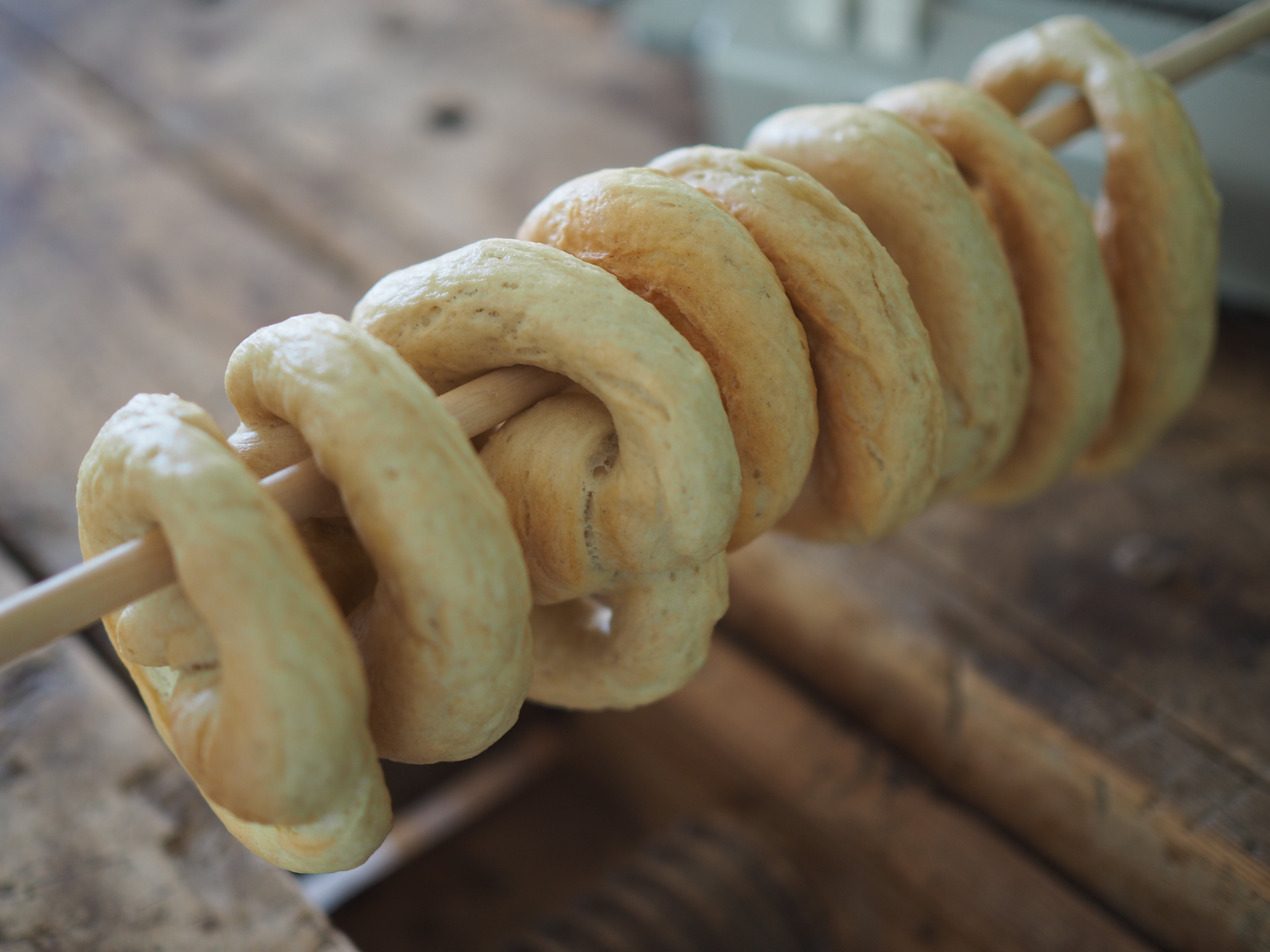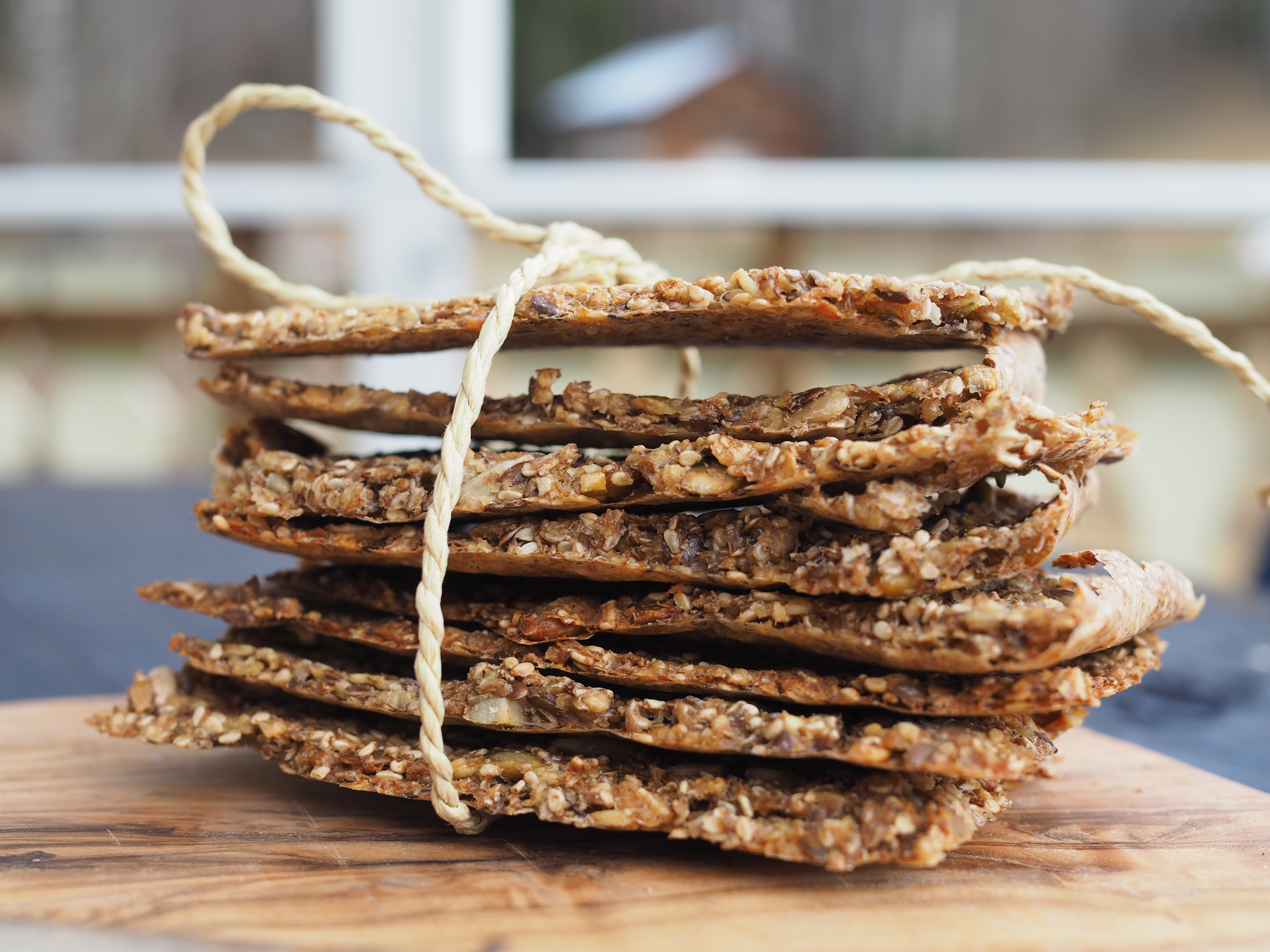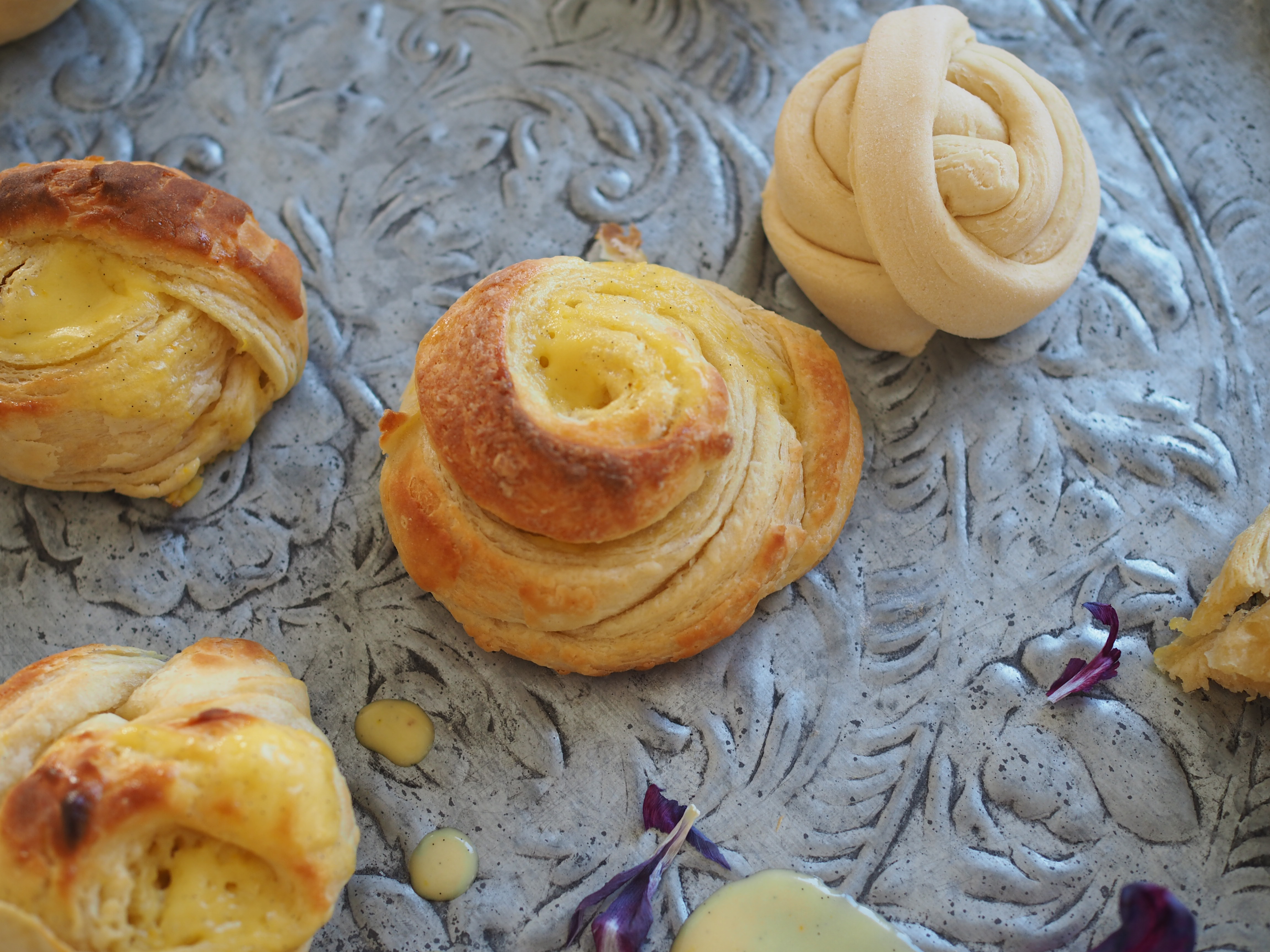 The smell of melting butter amidst flaky dough fills the room. A slight hint of orange and vanilla. As I wait for the minutes to pass, I cozy up to my chair and read more about the famous pastry known in Norway as wienerbrød, or translated to viennese and commonly referred to as danish in English. The aroma is well-known across bakeries in Norway and the rest of Scandinavia. It’s a pastry that was indeed created from bakers in Denmark, but not solely by their own efforts. It was a result of inspiration and the borrowing of techniques, like most recipes today. By standing on the shoulders of others, they were able to create a new, inspired pastry.
The smell of melting butter amidst flaky dough fills the room. A slight hint of orange and vanilla. As I wait for the minutes to pass, I cozy up to my chair and read more about the famous pastry known in Norway as wienerbrød, or translated to viennese and commonly referred to as danish in English. The aroma is well-known across bakeries in Norway and the rest of Scandinavia. It’s a pastry that was indeed created from bakers in Denmark, but not solely by their own efforts. It was a result of inspiration and the borrowing of techniques, like most recipes today. By standing on the shoulders of others, they were able to create a new, inspired pastry.
It is said that during the 1850s, a strike broke out amongst bakers in Copenhagen. This forced bakery owners to seek help from bakers in Vienna. The help was given, as it was usual for a baker master’s son to take up an apprenticeship in Vienna, the baking capital, and therefore they had good relations. The bakers from Vienna had a long tradition of lamination, where dough is layered with fat and rolled out several times. The Danish bakers were inspired and they began to develop the techniques, adjust to own their tastes and increase the amount of rich butter. The fillings and shapes were only left to the imagination and the creation of the Danish pastry or ‘Viennese Bread’ was born.


I came across an article about the historic town of Nusfjord, situated on Flakstadøya in Lofoten. The bakery, which no longer is in use, was built prior to 1877. It produced breads and pastries to both fishermen and locals. When fishermen would come from the fisheries to supply fish, they often had to take upon debt for shelter, food and tools as they could not pay in cash. The second squire of Nusfjord, known as ‘Old Bernhard’ would hang out a little bag filled with wienerbrød to every fishing crew as a small reward for their work, despite the debts. (Source)
I like to think that, sometimes, it’s just the simple, kind gestures, like hanging bags of wienerbrød for the taking, are what brings us closer as a community. Filling the belly. Satisfying a need. Doing the unexpected. Showing kindness. Those are the measures which create good relations. And so, perhaps when we bake, we should consider to double the amount. A great excuse for taking a moment to sit down, converse and share something sweet and special. (more…)

 Kringler. Nordic pretzels of various forms of sweet, salty, filled, crispy and soft. But one kringle stands out as one of the most well-known in Norway and it hails from Bergen. It also happens to be a permanent fixture on the 17 Mai (Grunnlovsdag) table, as it finds its place alongside spekemat (cured meats) and rømmegrøt.
Kringler. Nordic pretzels of various forms of sweet, salty, filled, crispy and soft. But one kringle stands out as one of the most well-known in Norway and it hails from Bergen. It also happens to be a permanent fixture on the 17 Mai (Grunnlovsdag) table, as it finds its place alongside spekemat (cured meats) and rømmegrøt.

 A Norwegian breakfast and lunch is never complete without a slice of bread or a type of knekkebrød. These ‘crisp breads’ or ‘breaking breads’ which are flat and dry, resembling a cracker, probably originated in Scandinavia close to 500 years ago. Some sources say that crisp bread was a staple of the Vikings as they could store them for long periods of time. These crisp breads would have been baked on hot stones, while today’s knekkebrød is baked in the oven. Baking them in the oven is what makes these crisp breads so different from the Norwegian flatbrød, which is baked on a flat griddle, much like lefse.
A Norwegian breakfast and lunch is never complete without a slice of bread or a type of knekkebrød. These ‘crisp breads’ or ‘breaking breads’ which are flat and dry, resembling a cracker, probably originated in Scandinavia close to 500 years ago. Some sources say that crisp bread was a staple of the Vikings as they could store them for long periods of time. These crisp breads would have been baked on hot stones, while today’s knekkebrød is baked in the oven. Baking them in the oven is what makes these crisp breads so different from the Norwegian flatbrød, which is baked on a flat griddle, much like lefse.



 As the sun rises, I find myself in the room I grew up in. The interior may have changed over the years I have been gone, but the memories have been imprinted across the walls, something that new paint cannot erase.
As the sun rises, I find myself in the room I grew up in. The interior may have changed over the years I have been gone, but the memories have been imprinted across the walls, something that new paint cannot erase.
 The smell of melting butter amidst flaky dough fills the room. A slight hint of orange and vanilla. As I wait for the minutes to pass, I cozy up to my chair and read more about the famous pastry known in Norway as wienerbrød, or translated to viennese and commonly referred to as danish in English. The aroma is well-known across bakeries in Norway and the rest of Scandinavia. It’s a pastry that was indeed created from bakers in Denmark, but not solely by their own efforts. It was a result of inspiration and the borrowing of techniques, like most recipes today. By standing on the shoulders of others, they were able to create a new, inspired pastry.
The smell of melting butter amidst flaky dough fills the room. A slight hint of orange and vanilla. As I wait for the minutes to pass, I cozy up to my chair and read more about the famous pastry known in Norway as wienerbrød, or translated to viennese and commonly referred to as danish in English. The aroma is well-known across bakeries in Norway and the rest of Scandinavia. It’s a pastry that was indeed created from bakers in Denmark, but not solely by their own efforts. It was a result of inspiration and the borrowing of techniques, like most recipes today. By standing on the shoulders of others, they were able to create a new, inspired pastry.


 Serving lamb, for instance, is not an old tradition. For the long, dark Norwegian winters delay the gestation period for sheep, meaning lambs are not large enough to be ready by Easter. The lamb is either imported or from last year’s yield. Nonetheless, lamb is important to the table today. Often served on the bone, it is roasted with simple herbs and seasonings.
Serving lamb, for instance, is not an old tradition. For the long, dark Norwegian winters delay the gestation period for sheep, meaning lambs are not large enough to be ready by Easter. The lamb is either imported or from last year’s yield. Nonetheless, lamb is important to the table today. Often served on the bone, it is roasted with simple herbs and seasonings.

